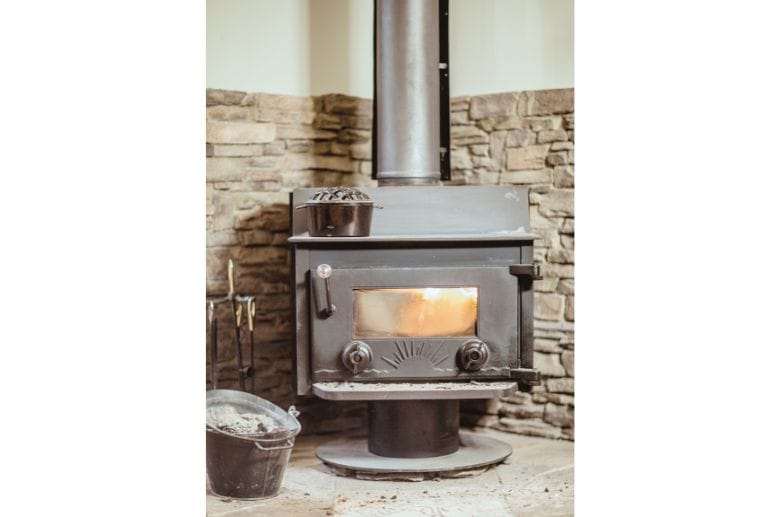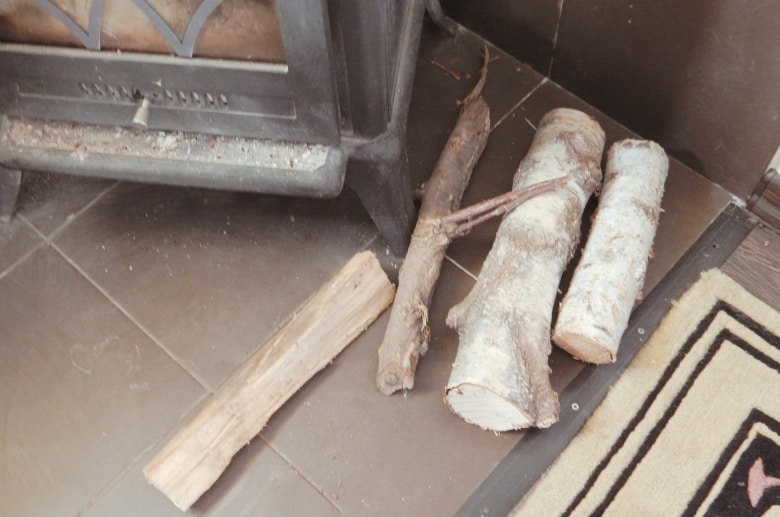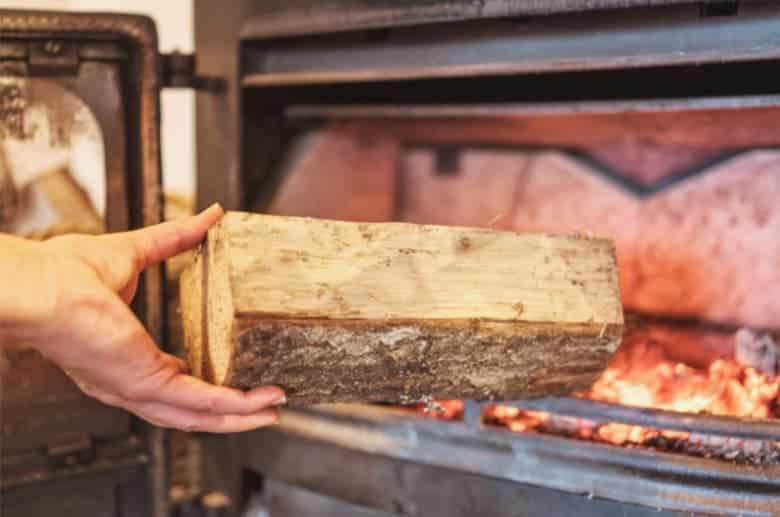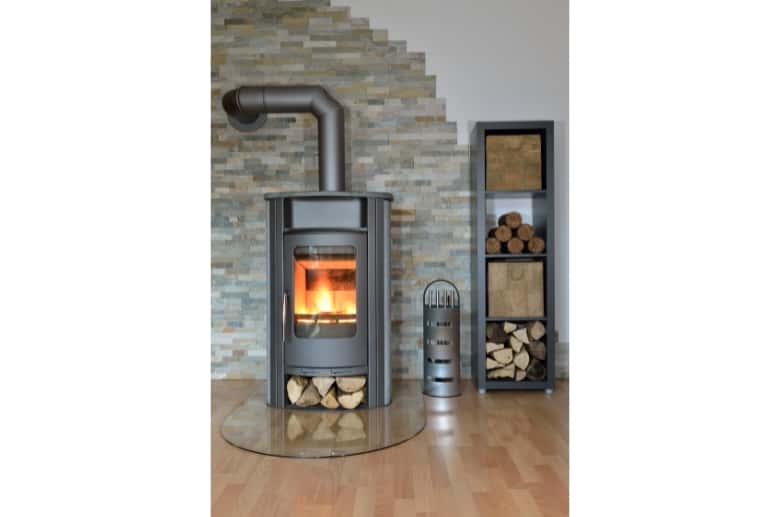Are you tired of feeling cold during the winter months? Do you want to add a touch of coziness to your home? If so, consider installing a wood stove or a fireplace insert. But which one is the best choice for you?
Whether you’re a city slicker, country bumpkin, fireplace enthusiast, or stove aficionado, we’ve got all the information you need to keep you warm and toasty. Here’s what you need to know about choosing between a freestanding wood stove vs fireplace inserts.
What is the Difference Between a Freestanding Wood Stove vs Fireplace Inserts?
A freestanding wood stove is a heating appliance that is not built into a wall or fireplace and is designed to burn wood as fuel. It typically has a metal exterior and a firebox visible from all sides.
On the other hand, a fireplace insert is a stove that fits into an existing fireplace. It is fueled by gas, wood, or pellets and has a firebox, combustion system, and heat exchanger. The insert is usually sealed off from the surrounding masonry with a metal shell to increase efficiency.
While these are just a couple of examples, there are various common wood stove types available in the market to cater to different heating needs and aesthetic preferences.
Before we explore their differences in detail, here’s an overview of their pros and cons.
Freestanding Wood Stove

If you’re looking for a charming centerpiece that can heat a large space, a freestanding wood stove is what you need.
Advantages
- Heat output: Freestanding wood stoves are designed to produce high heat levels, making them perfect for large, open spaces.
- Energy efficiency: Wood stoves are an eco-friendly and cost-effective way to heat your home, as they use renewable resources and require less electricity than other heating systems.
- Aesthetics: Freestanding wood stoves come in various styles and designs, adding rustic charm and a cozy ambiance to any room.
Disadvantages
- Installation: Freestanding wood stoves require professional installation, which can be expensive and time-consuming.
- Safety concerns: Wood stoves can emit hazardous pollutants, including carbon monoxide. Additionally, improper installation or use can pose a significant fire risk.
- Maintenance: Freestanding wood stoves require regular cleaning and maintenance to operate safely and efficiently.
——
Do You Need to Hire Chimney & Fireplace Expert?
Get free quotes from qualified experts near you. No commitment required!
——
Fireplace Inserts
Fireplace inserts are a great option for homeowners who want to upgrade their old fireplaces.
Advantages
- Heat output: Fireplace inserts produce maximum heat from limited fuel, allowing you to enjoy a cozy atmosphere without wasting energy.
- Installation: They are easy to install and require minimal maintenance.
- Energy efficiency: Inserts are highly efficient, distributing heat evenly throughout the house while saving electricity costs.
- Aesthetics: Fireplace inserts come in various shapes, sizes, and designs, allowing you to customize your fireplace to match your home’s décor.
Disadvantages
- Safety concerns: Fireplace inserts can be a fire hazard if not installed or used properly and may release harmful air pollutants.
- Limited heat output: They typically produce less heat than freestanding wood stoves, making them better suited for smaller rooms or as supplemental heat sources.
- Limited design options: While many styles and designs are available for fireplace inserts, they may not offer the same aesthetic appeal as freestanding wood stoves.
- Fuel source: Fireplace inserts typically use gas or electricity, so they may not be as eco-friendly or cost-effective as wood stoves.
Fireplace Insert vs Wood Stove Comparison
When choosing between a freestanding wood stove and a fireplace insert, there are several important factors to consider. Here’s a comparison of the key features to help you make an informed decision:
| Feature | Freestanding Wood Stove | Fireplace Insert |
| Fuel options | Wood | Gas, Wood, Pellet |
| Heat output and efficiency | On average, a wood-burning stove has approximately 70% to 80% efficiency. | Fireplace inserts have an efficiency rating of 76% – 83%. |
| Installation requirements | Professional installation is required and may also require chimney installation | It doesn’t need a new chimney, and it’s easy to install |
| Convenience and usability | Requires manual loading of fuel, may require more frequent tending | Easy to use, automated fuel feed and temperature control options available |
| Style and design options | A wide range of styles and designs are available | Limited design options |
| Maintenance and cleaning | Requires regular cleaning and maintenance | Requires regular cleaning and maintenance |
| Safety considerations | It can be a fire hazard if not used properly, and emissions must be managed | It can be a fire hazard if not installed or used properly and may release harmful air pollutants |
| Lifespan and durability | Freestanding wood stoves can last 10-15 years | When properly installed and maintained, fireplace inserts can last 20-30 years |
| Venting requirements | Requires venting through a chimney or stovepipe | Requires venting through an existing fireplace chimney or direct venting |
| Average cost | $2,500-$4,500+ | $1,500-$3,500+ |
The best stove for your home will depend on your heating needs and personal preferences. Remember to prioritize functionality over appearance to ensure your stove will meet your heating needs for years.
1. Fuel Options

Fireplace inserts and wood stoves typically use wood as their primary fuel source. They are designed to burn efficiently and provide heat through the combustion of firewood. While they can handle wood well, You should be aware of the risks of igniting cardboard when considering alternative materials.
In comparison, some fireplace inserts can also be used with other fuel options, such as natural gas or propane, providing more flexibility in fuel choices.
2. Heat Output and Efficiency
Wood stoves often have an advantage over fireplace inserts when comparing heat output and efficiency. Wood stoves are standalone units that radiate heat from all sides, allowing for higher heat output and better distribution throughout the room.
On the other hand, fireplace inserts are designed to fit into existing fireplaces and may not provide as much heat output or efficiency due to the limited space and existing chimney structure.
3. Installation Requirements
Installation requirements vary between fireplace inserts and wood stoves. Fireplace inserts are designed to be retrofitted into existing fireplaces, making them a convenient option if you already have a fireplace. The installation typically involves fitting the insert into the fireplace opening and connecting it to the chimney.
Wood stoves require a dedicated space and proper venting installation. This involves creating a non-combustible base and providing a suitable chimney or stovepipe for venting the smoke.
4. Convenience and Ease of Use

In terms of convenience and ease of use, fireplace inserts have an advantage. They are designed to be easily operated and controlled with features like adjustable airflow, thermostats, and remote controls.
To use a wood stove, add firewood and monitor the combustion process. Using a fireplace insert, you won’t have to clean up ashes and other messes like a traditional fireplace.
5. Style and Design Options
Both fireplace inserts and wood stoves offer various styles and design options to suit various home aesthetics. Fireplace inserts are designed to fit within an existing fireplace, allowing for seamless integration and preservation of the original fireplace’s charm.
Wood stoves come in different shapes, sizes, and finishes, offering versatility in matching your home’s style and décor.
6. Maintenance and Cleaning
When it comes to maintenance and cleaning, both fireplace inserts and wood stoves require regular attention. Fireplace inserts may require occasional cleaning of the insert itself, including the glass doors and chimney maintenance.
Wood stoves need regular ash removal, cleaning of the stovepipe or chimney, and inspections to ensure proper operation and safety.
——
Do You Need to Hire Chimney & Fireplace Expert?
Get free quotes from qualified experts near you. No commitment required!
——
7. Safety Considerations
Both fireplace inserts and wood stoves come with safety considerations. Proper installation and adherence to manufacturer’s guidelines are crucial to ensure safe operation.
It’s important to have a professional inspect the chimney, stovepipe, or flue regularly to detect any issues or blockages that could pose a safety hazard. Additionally, practicing proper fire safety, such as using a fire screen and keeping flammable materials away from the stove or insert, is essential.
8. Lifespan and Durability
The lifespan and durability of both fireplace inserts and wood stoves depend on the quality of the product and regular maintenance. With proper care, both can last for many years. Wood stoves, being standalone units, are generally built to withstand more wear and tear.
However, the durability can also vary based on the materials used and the construction of the fireplace insert or wood stove.
9. Venting Requirements

Venting requirements differ between fireplace inserts and wood stoves. Fireplace inserts typically use the existing chimney for venting, which can simplify the installation process. Wood stoves require installing a dedicated chimney or stovepipe system, ensuring proper drafting and the safe removal of smoke and gases from combustion.
10. Average Cost
The cost of fireplace inserts and wood stoves can vary depending on several factors, including the brand, features, materials, and installation requirements. Generally, wood stoves tend to have a wider price range due to the variety of options available.
Fireplace inserts can be a cost-effective choice if you already have a working fireplace, as they eliminate the need for extensive installation. Researching and comparing prices is recommended to find a stove or insert that fits your budget and requirements.
The Winner
Ultimately, there’s no clear winner between freestanding wood stoves and fireplace inserts because both options have unique advantages and disadvantages.
A freestanding wood stove might be your best option if you’re looking for a high heat output and rustic charm. However, a fireplace insert may be a better choice if you already have an existing fireplace and want to increase its efficiency.
No matter which stove you choose, it’s important to prioritize safety, functionality, and efficiency to ensure you make a wise investment. Take the time to compare different models, and consider consulting with a professional before making a final decision.
At the end of the day, whether you opt for a freestanding wood stove or a fireplace insert, you’ll enjoy a cozy and warm home during the colder months.






